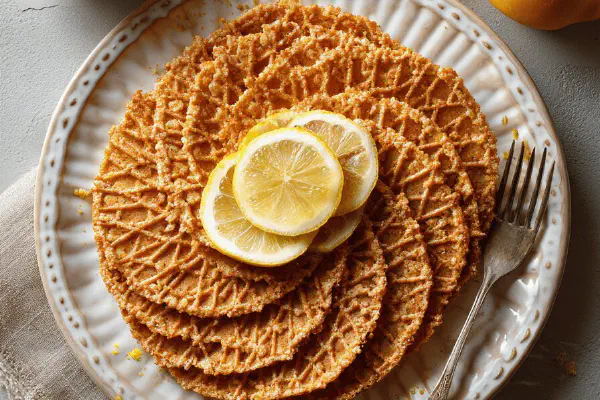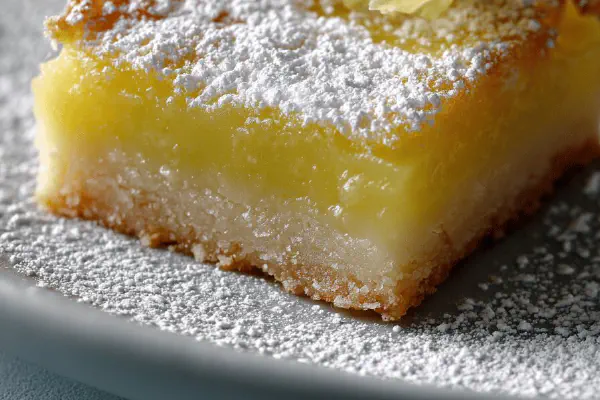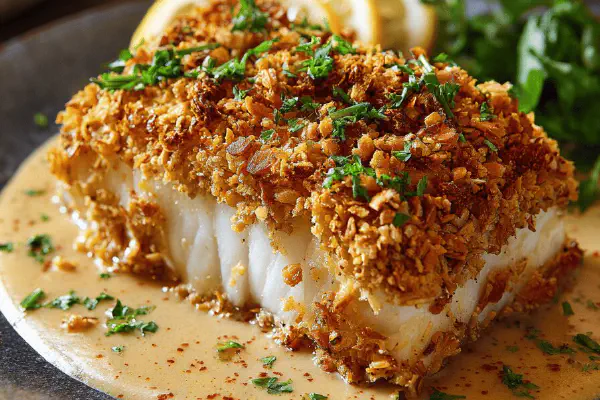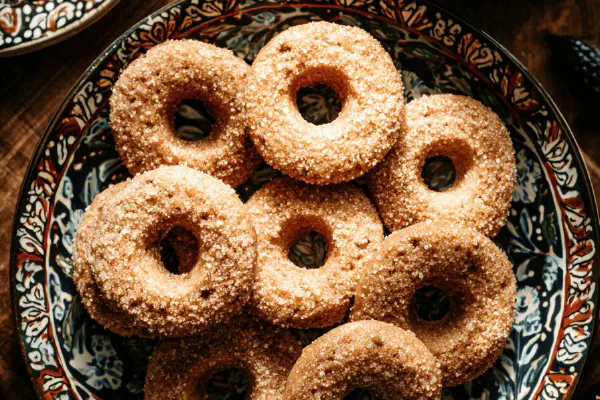Almond Citrus Pizzelles

By Emma
Certified Culinary Professional
Ingredients
- 90 g hazelnut flour, loosely packed
- 85 g spelt flour
- 40 g oat flour
- 90 g granulated sugar
- 50 ml extra virgin olive oil
- 20 ml limoncello liqueur
- 3 egg whites
- 1/4 teaspoon fine sea salt
- Zest of 1 lemon
About the ingredients
Method
- Separate egg whites from yolks for lighter pizzelles. Whisk whites with sugar and lemon zest. You'll see granular sugar dissolve slowly, pale yellow froth forming, volume increasing. Set aside.
- Combine hazelnut, spelt, oat flours, salt in medium bowl. Not too fine, a bit rustic. Gives texture. Stir mix well.
- Slowly fold dry mix into whites-spread lemon zest sugar combo. Careful not to deflate foam. Batter sticky, just moist, coats spoon—droopy, not runny.
- Preheat pizzelle iron until faint smoke or steady sizzle. No one-size-fits; check your model specifics. Oil plates with spray or brush olive oil thinly to avoid sticking. Always hot iron, batter binds crisp edges.
- Use about one tablespoon batter, spread gently but don't overfill. Clasp iron close, cook 45-50 seconds, watch edges color change from pale to golden, aroma sharp citrus and toast hitting nose. Listen for quiet hiss, a sign plates releasing steam, surface crisping.
- Open iron carefully. Pizzelle should lift easily. If dough tears, iron too hot or batter too dry. Place cookie on wire rack immediately. Cooling solidifies crisp snap.
- Repeat, re-oiling if batter sticks. Pizzelles hold shape by cooling before stacking.
- Store in airtight container no longer than 10 days. Wrap in parchment for freezer: 2 months.
- Watch out: oily batter can cause soggy centers if iron cools too much between batches. Stay consistent heat, quick but thorough cooking. If pizzelles floppy, cook longer slightly, but no char.
Cooking tips
Chef's notes
- 💡 Whip egg whites separately, slow sugar dissolve key; foam must hold or batter fails. Fold dry mix gently, no aggressive stirring or volume dies. Batter sticky, barely droops off spoon; add tsp water if too thick. Watch temp on iron, smoke or faint sizzle signals ready plates. Overheated iron dries batter edges fast, causing tears.
- 💡 Oil plates thinly, too much means soggy bottoms, too little causes sticky, torn edges. Reapply oil between batches. Spoon batter by tablespoon to keep consistent thickness. Overfill leads to raw centers, underfill yields brittle edges. Early aroma of lemon and nutty toast cues doneness, listen for quiet hiss indicating steam release.
- 💡 Use hazelnut flour instead almond meal. It's oilier; cut fat elsewhere or cookies get greasy. Blend spelt and oat flour for chew and earthiness, maintain total flour weight steady. Olive oil brings richer aroma than veg oil, unrefined type preferred for more fruit notes. Limoncello liqueur brightens flavor, swap for amaretto means adjust sugar balance to avoid bitterness.
- 💡 Cooling on wire rack crucial. Hot pizzelles off iron can sag, moisture ruins crisp if stacked too soon. Bake time shorter than original almond recipe, closer to 45 seconds. Watch edges turn from pale to golden brown with sharp citrus aroma. Sticky batter needs patience when folding; rushed mixing kills texture. Eggs whites whipped stiff, folded slowly to keep lightness intact.
- 💡 Batter temp affects cook time, room temp batter cooks evenly—cold batter slows crust formation. If edges too soft, cook a few seconds more but no char. If iron cools too much between batches, centers go soggy; maintain steady heat. Store in airtight containers flat single layers, parchment between if stacking for freezer. Best fresh but keeps frozen up to 2 months.
Common questions
Why use hazelnut flour not almond meal?
Hazelnut oilier, changes fat balance. Gives nuttier aroma. Almond sometimes too dry or dense in texture. Hazelnut flour pairs better with lemon zest, adds earthiness. Adjust fat in oil or sugar if too oily. Experiment ratios if replacing flours.
How to know when pizzelles are done?
Watch edges shift color, golden brown signals ready. Smell sharp citrus mixed with nutty toasted scent. Listen close for quiet hiss when steam escapes, means surfaces crisping. Open iron carefully, lifting pizzelle should come off without tears. If stuck, iron temp may be off or batter dry.
Batter too sticky or thick, fix?
Add teaspoon water gently, fold slowly to spread moisture. Avoid pouring too liquid or foam breaks down. Sticky batter coats spoon but droops slowly. Thick batter leads to uneven cooking or brittle cookies. Whip whites just right, sugar slow dissolve contributes volume.
Storing pizzelles, best way?
Cool completely on wire rack before storing. Airtight container mandatory to keep snap, parchment between layers avoids sticking. Lasts 10 days fridge, 2 months freezer. Avoid stacking hot cookie piles or steam softens crust. Reheat lightly if needed; crisp revives crispness.



